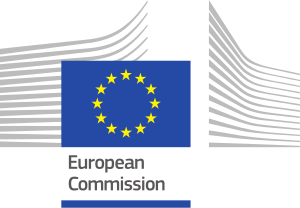EUnetHTA Early Dialogues aim at helping pharmaceutical and MedTech companies to understand the evidence and information needs of the HTA organisations and reimbursement bodies across Europe in order to inform decisions on coverage of newly developed health technologies. The goal is to improve the quality and adequacy of early evidence generation in order to be useful for the HTA process of reviewing and synthesising evidence to inform coverage decisions. Early Dialogues are in nature prospective activities with the focus on evidence generation for the development of reimbursement or coverage strategies. In the case of pharmaceuticals, for example, advice is usually requested during the Phase II studies and aims to discuss planned content of Phase III pivotal studies, and may include other aspects required by HTA bodies (e.g., additional comparisons, information on organisational or economic aspects). Pre-assessment of already existing pivotal studies is not included in the process.
During the JA2 (2012-2015), eleven early dialogues (9 on pharmaceuticals and 2 on medical technologies) were performed by EUnetHTA and provided basis for the development of a consolidated procedure (one of the JA2 deliverables). Further development of the process will be informed by the results achieved in JA2 and continuous cooperation with the EMA and its network of regulators.
In situations of inadequate availability of evidence at the time of assessment which contributes to uncertainty, additional evidence typically needs to be generated. This uncertainty may be an obstacle to the introduction of new potentially effective technologies into healthcare. Additional Evidence Generation can be important both in the phase of regulatory approval of the technology to the market and later in the approval of the technology to be covered or reimbursed from public resources or by payer organisations.
With regards to pharmaceuticals, regulators as well as HTA bodies have recently started to develop mechanisms allowing temporary access to promising technologies that require additional evidence to reduce uncertainty.
Additional (post-licencing) data collection was one of the areas of collaboration between the EMA and EUnetHTA during JA2. Along with the bi-annual meetings held between EMA and EUnetHTA more initiatives were gradually added to the programme of potential mutual cooperation. The current list includes several additional projects that are of potential future collaboration opportunities:
– EMA Scientific Advice for post-authorisation studies and risk minimisation (including input from the EMA Pharmacovigilance and Risk Management Committee – PRAC),
– enhanced PRAC consideration of the need for non-industry generated data (from real-world ‘best’ evidence),
– EU Network Training Centre,
– EMA framework contracts on procurement of studies,
– EU funded projects: IMI ADAPT-SMART, IMI Get Real, IMI ADVANCE, IMI WEBRADR, IMI Protect
– further enhancement of the initiative on registries (leveraging the outputs of the PARENT Joint Action).
EUnetHTA JA2 produced two position papers on i) how to best formulate research recommendations,and ii) how to decide on the appropriate study design, followed by development of a “Core protocol Pilot for AEG”. The objective of the papers was to i) endorse collaboration on AEG, ii) determine the key sharable items that would be requested by collaborating HTA bodies.
An approach of using the HTA Core Model® by all involved parties in the continuum of the future EUnetHTA activities along the life-cycle of health technologies might improve consistency and provide a “common ground” between consecutive stages of the management of the development of specific health technologies such as drugs and medical devices. An opportunity to use the HTA Core Model during the selection of questions for the Early Dialogue as well as for the Additional Evidence Generation has not yet been explored. An approach of using the same tool (i.e., the HTA Core Model) by all parties and at all stages of the life cycle of the technologies might improve consistency and could support the establishment of a “common framework” between regulators, HTA bodies and technology developers and producers.

